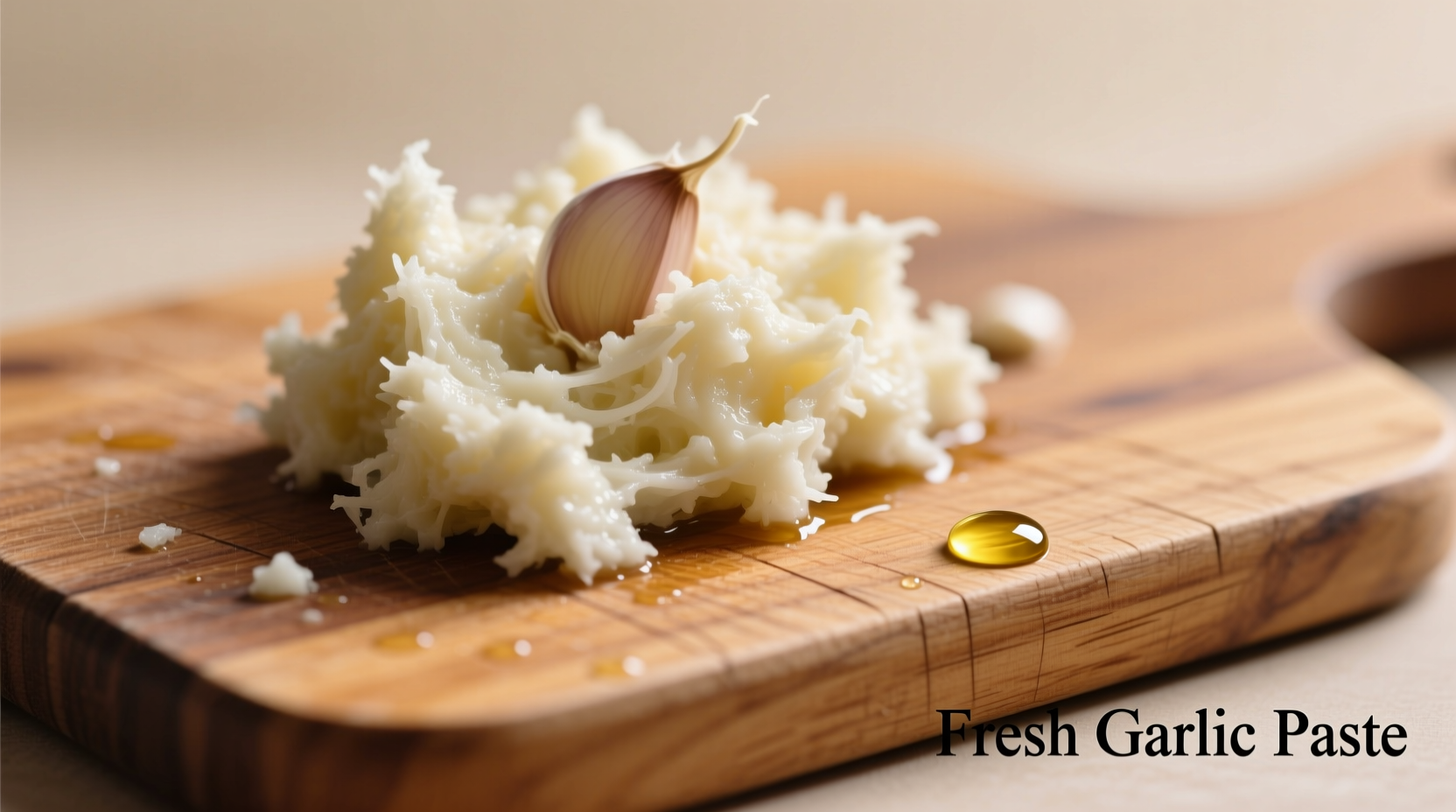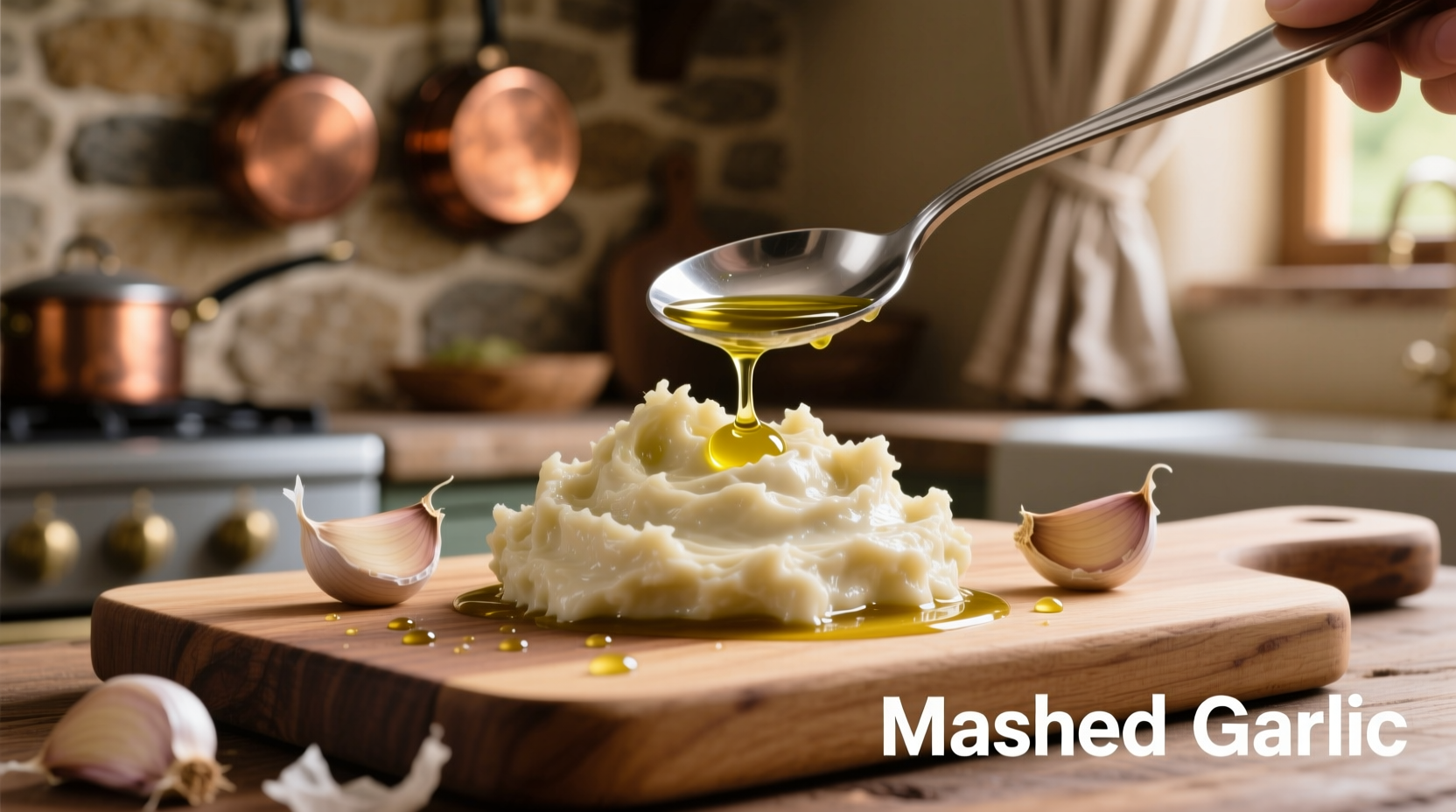When you mash garlic properly, you transform its chemical composition for superior culinary results. Unlike chopping which creates uneven flavor pockets, mashing ensures consistent distribution throughout your dish while activating more allicin—the bioactive compound that develops when garlic's cells are ruptured. This simple technique makes the difference between garlic that merely sits in your food and garlic that truly integrates with every ingredient.
The Science Behind Mashed Garlic's Superior Flavor
Garlic contains alliin and the enzyme alliinase stored in separate cellular compartments. When you crush or mash garlic, these components mix and produce allicin—the compound responsible for garlic's distinctive aroma, flavor, and health properties. Mashing creates more complete cell rupture than chopping, yielding up to 30% more allicin according to research from the National Center for Biotechnology Information.
| Preparation Method | Allicin Yield | Flavor Distribution | Best For |
|---|---|---|---|
| Mashed | ★★★★★ (Highest) | Even throughout dish | Sauces, dressings, marinades |
| Minced | ★★★☆☆ (Medium) | Uneven pockets | Sautéing, stir-fries |
| Sliced | ★☆☆☆☆ (Lowest) | Localized flavor | Roasting, infusions |
Step-by-Step Guide to Perfect Mashed Garlic
Follow this professional technique to maximize flavor extraction:
- Peel properly: Place cloves on cutting board, lay flat side of chef's knife over them, and press firmly to loosen skins
- Add salt: Sprinkle 1/4 teaspoon coarse salt per clove—this creates abrasive action during mashing
- Use proper technique: Place clove on cutting board, cover with flat side of chef's knife, and press down firmly with heel of hand
- Rock and press: Move knife in rocking motion while applying downward pressure for 15-20 seconds
- Check consistency: Properly mashed garlic should form a smooth paste with no visible chunks

Essential Tools for Mashing Garlic
While a chef's knife works well, these specialized tools deliver consistent results:
- Garlic press: Best for quick preparation but may not extract maximum flavor
- Mortar and pestle: Traditional method allowing controlled pressure application
- Microplane grater: Creates ultra-fine paste but requires careful handling
- Chef's knife: Most versatile option that gives you complete control over texture
When to Use Mashed Garlic in Your Cooking
Mashed garlic shines in applications where even flavor distribution matters most:
- Vinaigrettes and emulsions: Prevents garlic chunks in dressings
- Marinades: Ensures consistent flavor penetration
- Compound butters: Creates smooth texture without graininess
- Cold preparations: Essential for aioli and mayonnaise-based sauces
Professional chefs avoid mashed garlic in high-heat applications where its finer particles might burn quickly. For sautéing, mincing provides better control over cooking time.
Flavor Development Timeline
Understanding how garlic flavor evolves after mashing helps you time your cooking perfectly:
- 0-30 seconds: Initial cell rupture begins allicin production
- 30-90 seconds: Peak allicin concentration reached (optimal for raw applications)
- 2-5 minutes: Flavor begins transforming into more complex compounds
- 10+ minutes: Allicin breaks down into mellower, more complex sulfur compounds
For raw applications like salad dressings, use garlic immediately after mashing. For cooked dishes, let it rest 5-10 minutes to develop more nuanced flavors before adding to heat.
Storage Guidelines and Safety Considerations
Proper storage maintains flavor while preventing food safety issues:
- Refrigerate in airtight container for up to 3 days (flavor degrades significantly after day 2)
- Never store in olive oil at room temperature—risk of botulism per FDA food safety guidelines
- Freeze in ice cube trays with oil for longer storage (up to 3 months)
- Add lemon juice to slow enzymatic browning during storage
Common Mistakes to Avoid
Even experienced cooks make these critical errors with mashed garlic:
- Using pre-minced jarred garlic: Contains preservatives that alter flavor chemistry
- Mashing too early before cooking: Causes flavor degradation before use
- Adding directly to high heat: Burns easily due to fine particle size
- Not adjusting quantity: Mashed garlic delivers more intense flavor—use 25% less than chopped
Flavor Pairing Recommendations
Mashed garlic integrates beautifully with these ingredients:
- Acids: Lemon juice or vinegar stabilizes allicin and enhances brightness
- Fats: Olive oil carries garlic flavor throughout dishes
- Herbs: Parsley, basil, and cilantro complement without overpowering
- Umami sources: Anchovies or Parmesan create flavor synergy
For Mediterranean dishes, combine mashed garlic with lemon and olive oil. In Asian cuisine, pair with ginger and sesame oil. The French technique of "mise en crème" blends mashed garlic with heavy cream for luxurious sauces.











 浙公网安备
33010002000092号
浙公网安备
33010002000092号 浙B2-20120091-4
浙B2-20120091-4